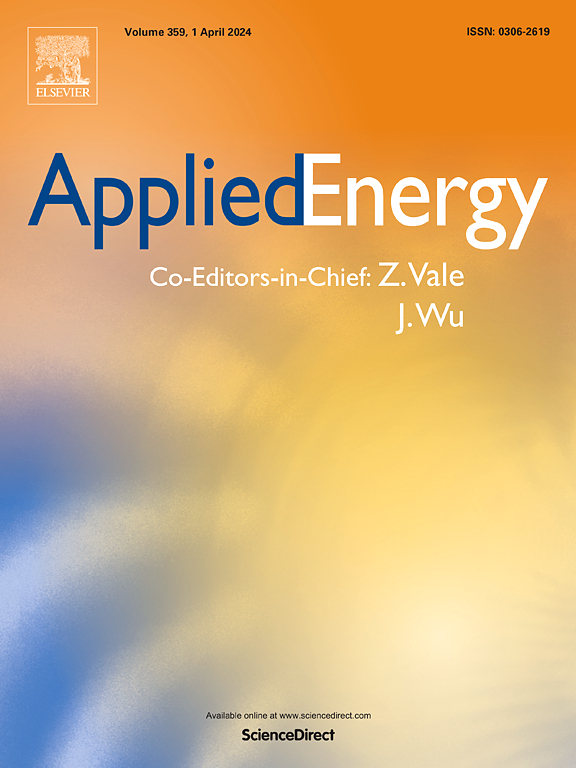Electromechanical modeling of advanced adiabatic compressed air energy storage system compressed charging unit: Incorporating compressor dynamical performance under variable operating conditions
IF 11
1区 工程技术
Q1 ENERGY & FUELS
引用次数: 0
Abstract
The large capacity and independence of fossil fuels make advanced-adiabatic compressed air energy storage (AA-CAES) a promising technology for supporting the integration of volatile renewable energy resources. Current AA-CAES models mainly focus on planning level problems such as efficiency improvement. The electromechanical dynamics of AA-CAES system underpin controller design and stability analysis, which is the foundation of power system operation, but received less attention, because the intricate and nonlinear interactions between the pneumatic and mechanical operations of the compressor, occurring over milliseconds to seconds, make the modeling problem highly complicated to maintain the simplicity to facilitate the design of the control system while describing complex dynamic behavior. This paper proposes an electromechanical transient model of the charging unit of AA-CAES, considering compressor dynamical performance under variable operating conditions. Based on the conservation of mass, momentum and angular momentum, the compressor dynamics are characterized by a nonlinear ordinary differential equations (ODEs), which achieve a proper balance between accuracy and complexity. The model parameters can be calibrated using measured data of real plants or the existing models in the literature. A simulation module for the charging process is developed in the Matlab/Simulink platform. The proposed transient model can capture the surge instability, which is characterized by a limit cycle at a primary frequency of 7 Hz. The model also elucidates the transient dynamics of driving torque, inlet guide vanes (IGVs) and throttle valve adjustments. By accounting for mechanical-pneumatic coupling, it demonstrates how each control action affects all state variables on a millisecond-to-second timescale.
先进绝热压缩空气储能系统压缩充气装置机电建模:考虑压缩机在变工况下的动态性能
化石燃料的大容量和独立性使先进绝热压缩空气储能(AA-CAES)成为支持挥发性可再生能源整合的一项有前途的技术。目前的AA-CAES模型主要关注效率提升等规划层面的问题。AA-CAES系统的机电动力学是控制器设计和稳定性分析的基础,是电力系统运行的基础,但由于压缩机的气动和机械运行之间复杂的非线性相互作用(发生在毫秒到秒之间)使得建模问题高度复杂,在描述复杂的动态行为的同时保持控制系统的简单性,从而便于设计,因此很少受到关注。本文提出了考虑压缩机动态性能的AA-CAES增压机组机电暂态模型。基于质量、动量和角动量守恒,用非线性常微分方程(ode)来描述压缩机的动力学特性,在精度和复杂性之间取得了适当的平衡。模型参数可以使用实际植物的测量数据或文献中已有的模型进行校准。在Matlab/Simulink平台上开发了充电过程仿真模块。所提出的暂态模型可以捕捉浪涌不稳定性,其特征是在7 Hz的主频率处存在一个极限环。该模型还阐明了驱动转矩、进口导叶和节流阀调节的瞬态动力学。通过考虑机械-气动耦合,它演示了每个控制动作如何在毫秒到秒的时间尺度上影响所有状态变量。
本文章由计算机程序翻译,如有差异,请以英文原文为准。
求助全文
约1分钟内获得全文
求助全文
来源期刊

Applied Energy
工程技术-工程:化工
CiteScore
21.20
自引率
10.70%
发文量
1830
审稿时长
41 days
期刊介绍:
Applied Energy serves as a platform for sharing innovations, research, development, and demonstrations in energy conversion, conservation, and sustainable energy systems. The journal covers topics such as optimal energy resource use, environmental pollutant mitigation, and energy process analysis. It welcomes original papers, review articles, technical notes, and letters to the editor. Authors are encouraged to submit manuscripts that bridge the gap between research, development, and implementation. The journal addresses a wide spectrum of topics, including fossil and renewable energy technologies, energy economics, and environmental impacts. Applied Energy also explores modeling and forecasting, conservation strategies, and the social and economic implications of energy policies, including climate change mitigation. It is complemented by the open-access journal Advances in Applied Energy.
 求助内容:
求助内容: 应助结果提醒方式:
应助结果提醒方式:


